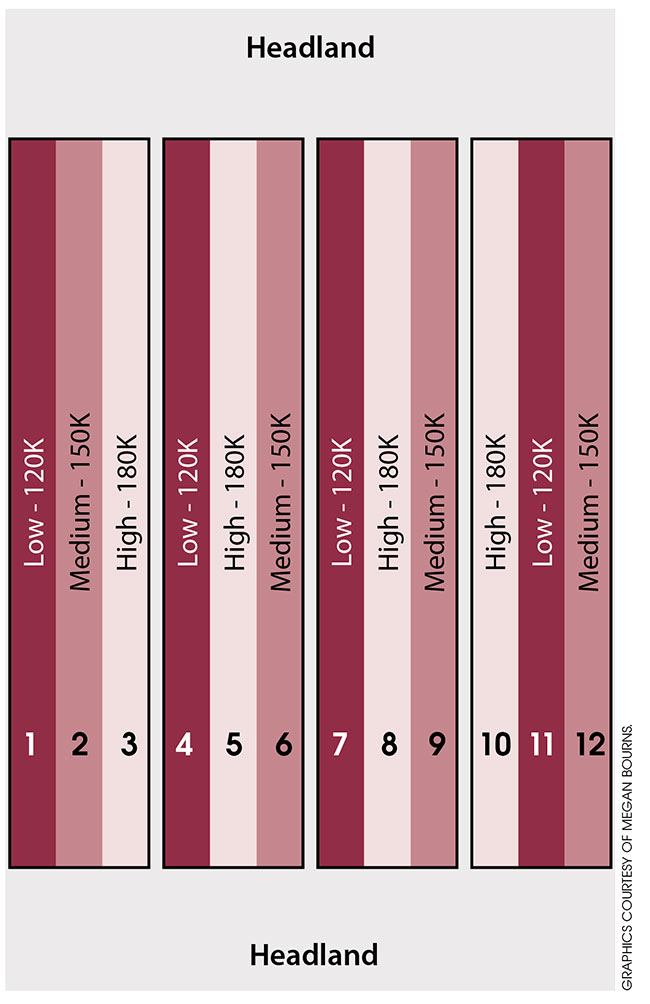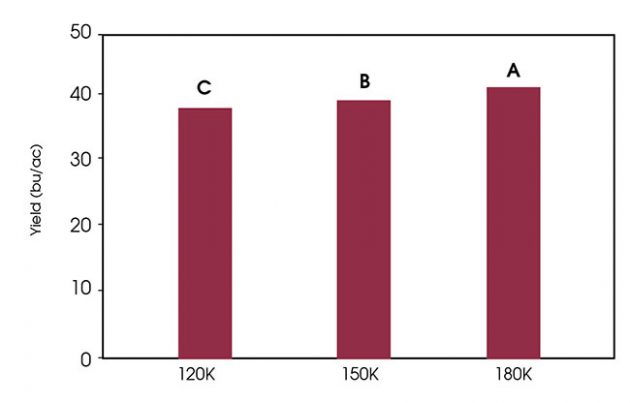
Features
Agronomy
Research
Getting the most from on-farm trials
Tips and tricks for bringing the power of research to your field.
July 31, 2021 By Megan Bourns

Randomize. Replicate. Stats first, agronomic interpretation second. Economics follow. Megan Bourns, On-Farm Network agronomist with the Manitoba Pulse and Soybean Growers (MPSG), discussed how to get the most out of on-farm trials at the Top Crop Summit, Feb 23-24, 2021.
MPSG has been running on-farm trials since 2012 and the On-Farm Network (OFN) was officially created in 2014. To date, more than 350 trials have been conducted, and MPSG continues to co-ordinate them because of the value it provides farmers.
There are many different approaches to investigate various agronomic practices on-farm. These approaches can include splitting fields, running a test strip, doing demo plots, and formal, replicated and randomized trials. Field splits, test strips and demo plots are not useful because they do not provide reliable data. An on-farm trial is research conducted scientifically and statistically soundly by a farmer or his agronomist, with his own equipment, agronomic management and growing season conditions.
The MPSG OFN trials are large field-scale strip trials, but on-farm trials can also take the form of smaller scale plots interspersed in difference management zones using variable rate technology. What it comes down to is that the scale of your on-farm trial or the scale of the question should reflect the scale at which your management decisions are made.
So why is investing time and effort into on-farm trials a valuable thing to do? The very core of the ‘value’ discussion for on-farm research is the fact that it’s conducted under very ‘real’ conditions. On-farm trials investigate the agronomic recommendations or principles coming out of small plot trials, which are conducted under uniform conditions and maybe a different package of management decisions compared to what applies to the farm. On-farm trials allow you to evaluate how they perform in your fields, under your growing season conditions and management decisions. They allow you to make future farm decisions with confidence.
There are several steps for setting up for success. First, identify an appropriate question that is specific and can be answered with two or three treatments. This could be: “Can I reduce my soybean seeding rate without lowering yield?”
Set realistic treatments for your farm that are different enough from each other to potentially lead to different agronomic outcomes. Comparison treatments could be a normal seeding rate versus 30,000 seeds per acre lower rate. Consider including a third treatment as well. i.e. 120,000 vs. 150,000 vs. 180,000 seeds/ac.
Determine the trial location, design and layout. Select an appropriate, representative part of the field, and then randomize and replicate so that statistics can be run with confidence. Replication builds statistical power. Randomization makes sure the difference is really from the treatment
Randomize and replicate
Plan in-season data collection that is relevant to the trial question. If seeding rate is being investigated, collect or at least observe things like early and late season plant stand as well as yield.
Accurate yield results are very important. Before harvest, plan out how the replicates will be harvested, ideally with a weigh wagon or grain cart with a scale.

Interpret results
Statistics tells us if the differences are real or random. They show if the treatment actually made a difference. Statistics should be done first, agronomic interpretation next, and economics to follow.
How to run statistics? The MPSG has resources in the OFN research section that has information on understanding statistics. The Indian Head Agricultural Research Foundation (IHARF) has a guide to statistics and a useful statistics spreadsheet that helps to run simple statistics for on-farm research projects.
When a treatment is statistically significant – or different – from another treatment, it means that the difference was due to the treatment and not a random effect. When statistics are presented, there may be letters to indicate significant differences. Letters that are different mean the differences are significant.
After conducting statistics, determine the agronomic and economic impacts of the trial and whether the outcomes favour a management change. Also assess the whole package of information you have from your trial, such as plant stand, nodulation ratings or other observations.
And, when you get a “no result” with no significant differences, that is still a result with agronomic implications.
The MPSG OFN allows you to share results and learn from others who are doing the same on-farm trials. The OFN website organizes single site research reports into a searchable database, providing detailed information at the farm level, packaged in an easy-to-read short document. Use this information to compare how on-farm trials in similar geographic areas turned out.
Following these steps will ensure your trial deserves a Gold Star, and you can make future farm decisions with confidence.